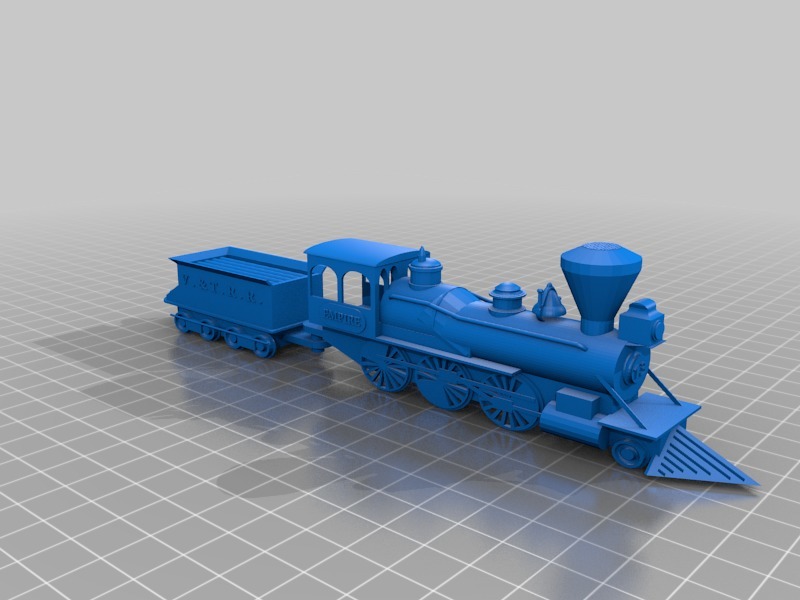
Empire Steam Train.stl
thingiverse
Virginia & Truckee Railroad General Superintendent Henry M. Yerington ordered steam locomotive No. 13 in early October 1872, shortly after the Nevada short line completed its connection with the transcontinental Central Pacific at Reno. The V&T was overwhelmed by freight and passenger traffic, with carloads of freight crowding nearly all sidings and yards on the 52-mile line. Overwhelmed by business, the V&T lacked an adequate number of steam locomotives and passenger cars to handle increased traffic. Superintendent Yerington solicited surplus engines from Central Pacific and Union Pacific Railroads, renting several CP American-type locomotives on a monthly basis. This temporary solution was insufficient, prompting Yerington to conclude that the railroad needed additional motive power. Locomotive No. 13 arrived in February of 1873. Empire City, located three miles east of Carson City, was an important territorial town and station on the Overland Route. The engine quickly entered freight service from Virginia City to Carson City and Reno. As frantic traffic conditions subsided from the late 1880s to 1902, the V&T held No. 13 in reserve. With a subsequent upswing in the economy, the No. 13 received a major overhaul and was restored to regular freight service. In 1910, the Carson City shops converted the Empire from wood to fuel oil. Due to V&T engine crews considering No. 13 an unlucky number, the number was changed to V&T second No. 15 at this time. The locomotive was placed in storage and retired in 1918 due to declining business on the V&T. It was sold in 1924 to the Pacific Portland Cement Company of Gerlach, Nevada where it saw service as PPC Co. switcher No. 501 until 1931. In 1938 the Empire was donated to the Pacific Coast Chapter of the Railway & Locomotive Historical Society and moved to the San Francisco Bay Area. There it remained until 1966 when it underwent a cosmetic restoration at Bethlehem Steel Corporation's San Francisco shipbuilding yards. In 1976, the locomotive moved into the newly-reconstructed Central Pacific Railroad Passenger Station in Old Sacramento. A total restoration effort began two years later. The tender was stripped, rust and holes filled and repainted in original V&T colors. The trucks were cleaned and repainted, and new brake beams of oak were added. Except for a single end timber, the tender frame was replaced. The locomotive was stripped to its driving wheels, frame and boiler. A new brass steam dome wrapper and simulated Russian iron boiler jacket were fabricated and installed, as was a new Baldwin Yankee-style smokestack. A new cab made of ash, as on the original engine, and numerous small fittings reconstructed from period photographs and drawings brought the locomotive close to completion. In a final step, craftsmen repainted the locomotive in the original V&T colors, complete with gold-leaf striping. Since 1981, the Empire has been displayed surrounded by mirrors where visitors can appreciate all aspects of 1870s locomotive construction.
With this file you will be able to print Empire Steam Train.stl with your 3D printer. Click on the button and save the file on your computer to work, edit or customize your design. You can also find more 3D designs for printers on Empire Steam Train.stl.
